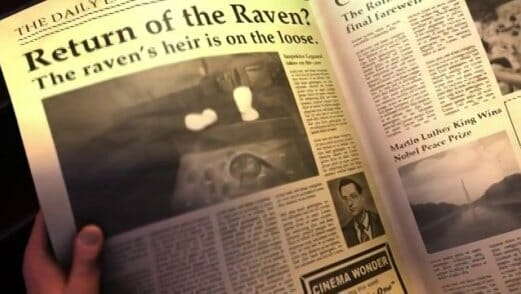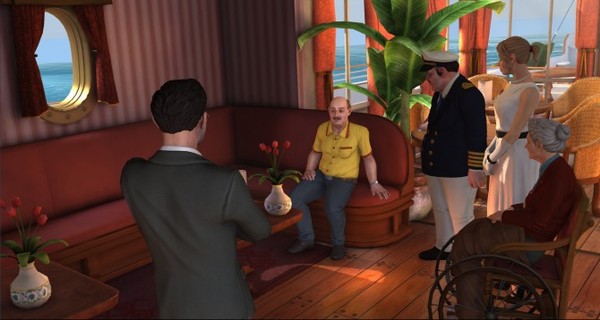The Raven: Legacy of a Master Thief (Multi-Platform)

I write a lot about detective games here at Paste. Usually those games take their inspiration (and whole plot points) from the more American detective authors, the hardboiled Chandlers and Hammetts, noir films. Drunk white men and the cigarette-smoking women who betray them.
The Raven, though, is straight up Agatha Christie. It starts on the Orient Express, takes a cruise ship across the Mediterranean, and wraps up in a museum in Cairo. The cast that travels between these locations are mostly European royalty and their companions: doctors and rich American socialites and artistic hangers-on.
Well, the plurals there is a bit misleading: It’s a small group, all traveling together to the Cairo museum where a pair of jewels called the Eyes of the Sphinx will be displayed together for the first time. One has been stolen before the game starts—or, as one character points out, stolen a second time: “You didn’t think it was just lying on the sand, did you?”
Repatriation of cultural artifacts is not a common theme in a medium that so very often traffics in the imagery of colonialist adventure. And I don’t want to overstate its presence here: The Raven is not about making amends for past violence, even if there is no tomb raiding.
But what you learn as you move Constable Jakob Zellner around these areas, talking to these people, is that everyone has their assumptions about people, including this schlubby Swiss cop whose reddish and yellowish button-down short sleeved shirt cruise attire is so very much a dad thing.
The game keeps score as you solve mysteries (and, later, as the Raven, create those mysteries). You can spend those points to get a hint from a journal or to see all the things on screen you can interact with. I did the latter, which costs 10 points each time you do it, many times. I never ran out of points. I don’t care much for scores.
Occasionally a conversation will involve you choosing the right dialogue options to explain what has happened: Whether or not you get it right doesn’t matter.
Visually everything is a little cartoony, a little exaggerated. The teeth look uncanny when characters smile. Occasional graphical glitches cause people’s faces to disappear or their jaws to rotate back into their skulls.
There are so few characters and each is a type. As you converse with everyone, though, they get fleshed out a bit in the course of the eight or so hours of the game’s three individually-purchased episodes. Some of the fleshing-out is not surprising: I bet you can guess what the German doctor’s dark secret is (here’s a hint: The game takes place in early 1960s Europe, not all that far away from World War II). Some of it is very touching. There’s a lot of sadness in these characters, broad strokes of loss that give everything a touch of melancholy.
Because this is a mystery, surface level assumptions have to be wrong. If they weren’t, there wouldn’t be any question as to what happened or who was responsible for what. As you talk to different characters you find out their worldviews, how they interpret events. As the game progresses it becomes clear that certain people are counting on others’ prejudices, exploiting their expectations. Unlike the comment about the gems having originally been stolen by the English for their museums, these assumption-challenging moments are crucial to the game’s story.
